| Language families of Mesoamerica |    |
The most developed writing systems of the Americas are in Mesoamerica. We will be primarily concerned with members of the Mayan language family (often called just "Maya(n)", ignoring dialect differences) since it shows the most extensive evidence for true linguistic representations. But several other language families in the area have played a role in the development of writing.
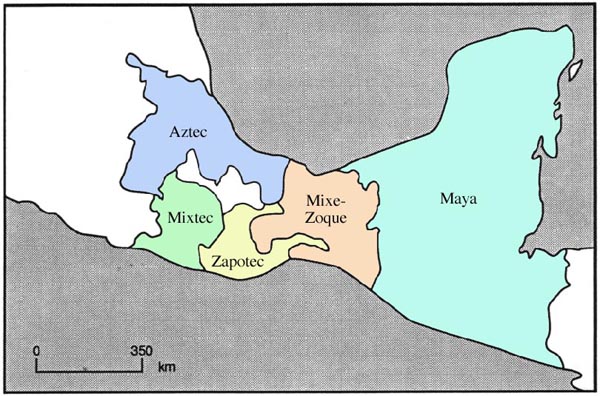
- Mayan: The most extensively written, with the most established linguistic basis.
- Mixe-Zoque: Probably the language family of the Olmec, and of certain linguistic texts such as La Mojarra.
- Zapotec: Includes early writing at Monte Albán in Oaxaca, which was apparently not fully linguistic but was a possible influence on Maya writing.
- Mixtec: Some ideographic writing, but probably not fully linguistic.
- Aztec: The language of the Aztec Empire (conquered by Cortés), also called Nahuatl. Marginal writing, making use of rebus but not fully linguistic.
The Mayan language family is large and diverse, encompassing 24 languages from Mexico to Honduras and El Salvador (in pre-colonial times) with currently 3.5 million total speakers. There were two major Mayan languages written in the hieroglyphic texts: a member of the Cholan branch from southern Mexico, Guatemala, or Honduras, sometimes called "Classic Mayan"; and Yucatec spoken in the Yucatán peninsula. There is good linguistic evidence that the writing system was first developed for a Cholan language, and was later borrowed to write Yucatec.
The "golden age" of Maya history lasts from about the years 250 (some say 150) to 900 CE. This is the time span in which we find Maya writing in its full form, and most of our evidence about Maya writing comes from this period. Later there were no doubt still a great many bark paper books or "codices" written, but almost all were destroyed by the Spanish conquerors after 1519.
 Maya
writing combined logograms and phonographic symbols,
which expressed sound sequences of the shape V or CV. This is of
course a syllabic system:
there are no phonetic symbols that are just C (contrast Egyptian).
Unlike Sumerian-Akkadian there are also no syllabic signs that stand
for CVC or VC.
Maya
writing combined logograms and phonographic symbols,
which expressed sound sequences of the shape V or CV. This is of
course a syllabic system:
there are no phonetic symbols that are just C (contrast Egyptian).
Unlike Sumerian-Akkadian there are also no syllabic signs that stand
for CVC or VC.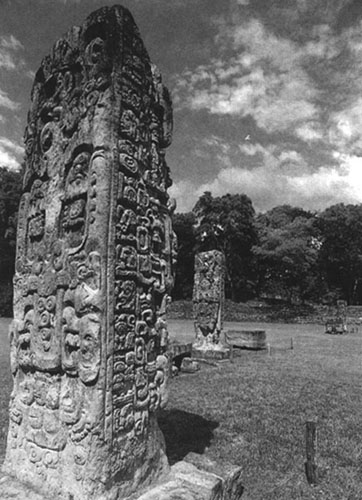 Maya writing survives in a wide range
of contexts, including stone monuments, pottery, and books.
Maya writing survives in a wide range
of contexts, including stone monuments, pottery, and books. 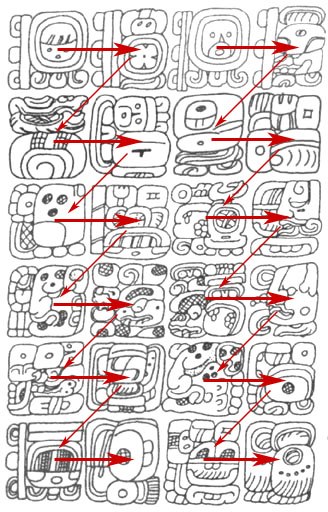 A
distinctive feature of Mayan (and some other Mesoamerican) writing
is the way that glyph blocks are read in paired columns — that
is, left to right within pairs of glyph blocks and overall in the
text, but proceeding down a pair of adjacent columns before moving
rightward.
A
distinctive feature of Mayan (and some other Mesoamerican) writing
is the way that glyph blocks are read in paired columns — that
is, left to right within pairs of glyph blocks and overall in the
text, but proceeding down a pair of adjacent columns before moving
rightward. 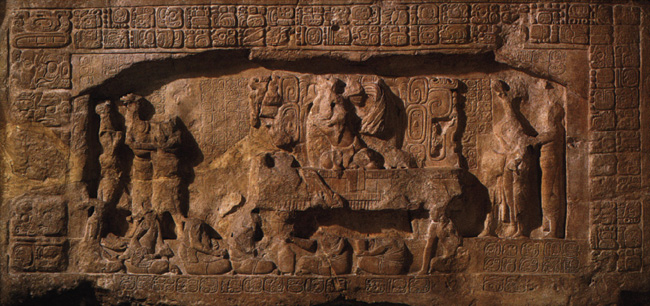

 These pages are from the Dresden Codex,
one of the few surviving Maya books, largely containing astronomical
data and calculations.
These pages are from the Dresden Codex,
one of the few surviving Maya books, largely containing astronomical
data and calculations.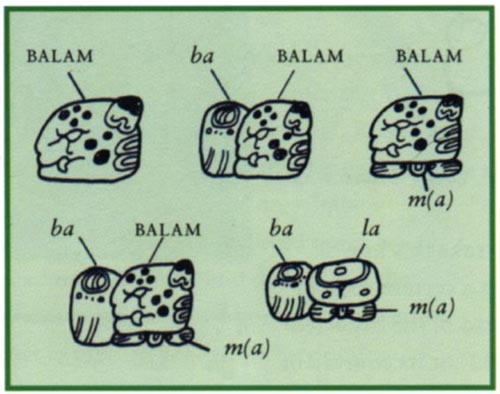
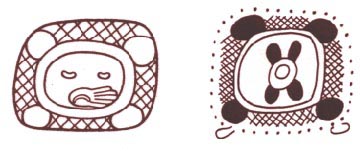
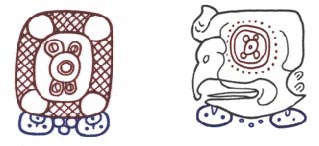
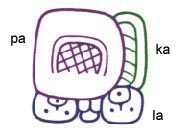

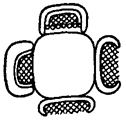




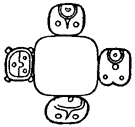


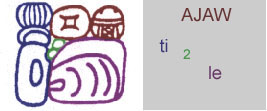
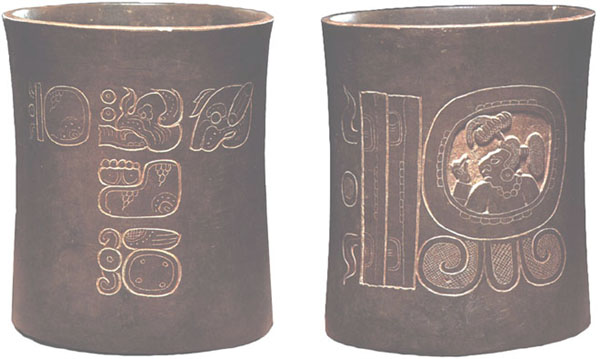
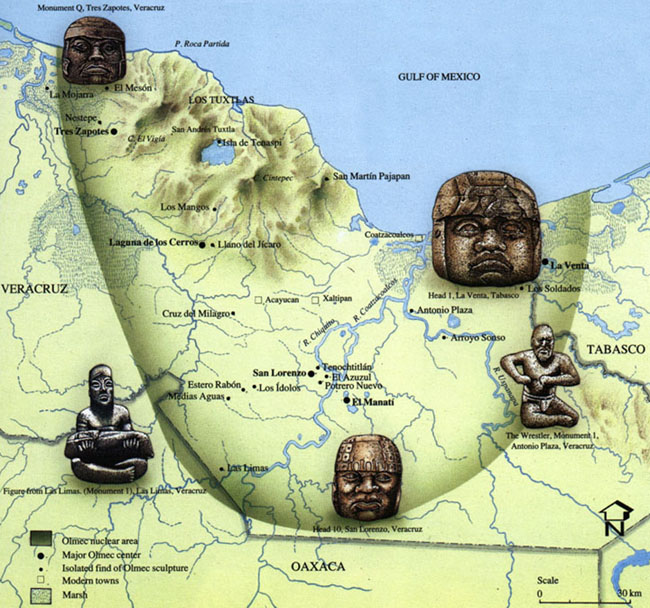
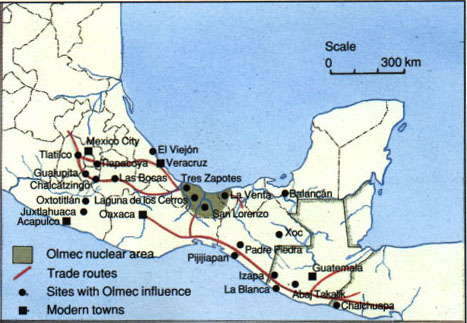
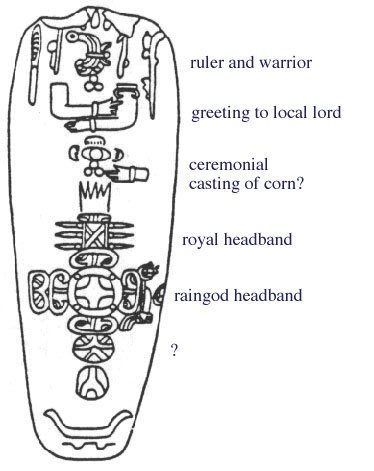 For example, the Humboldt Celt,
an ax-like tool from about 900 BCE, contains
many symbols similar to Maya glyphs.
For example, the Humboldt Celt,
an ax-like tool from about 900 BCE, contains
many symbols similar to Maya glyphs.
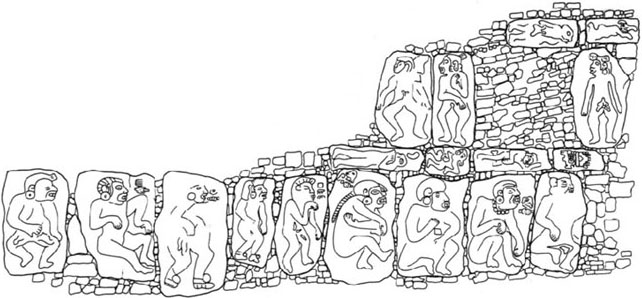
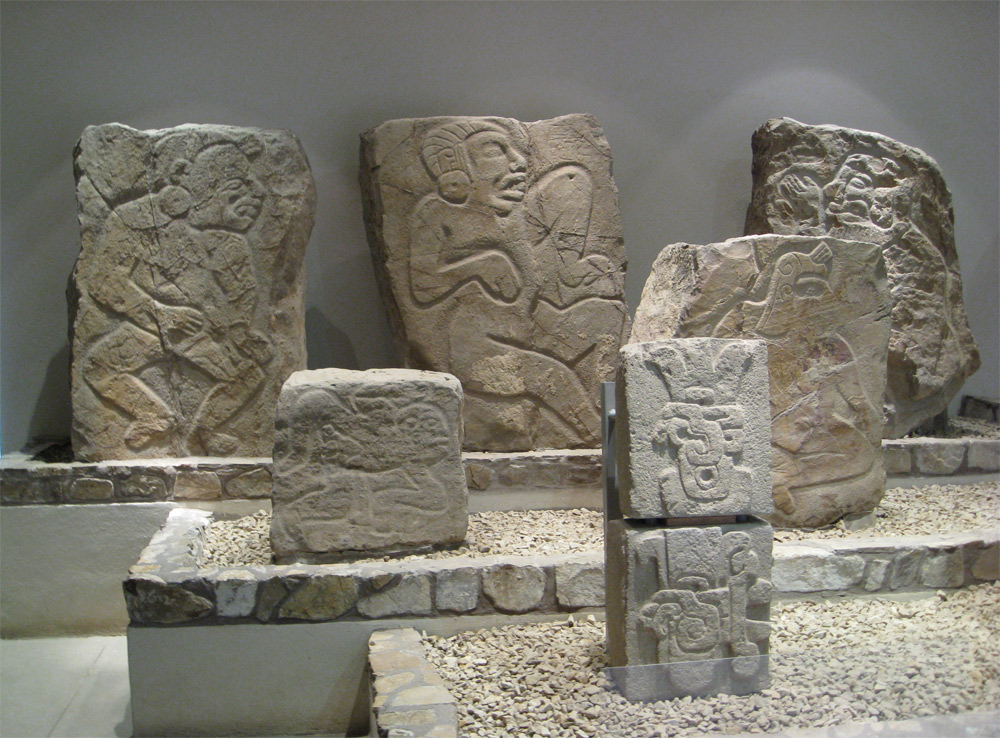
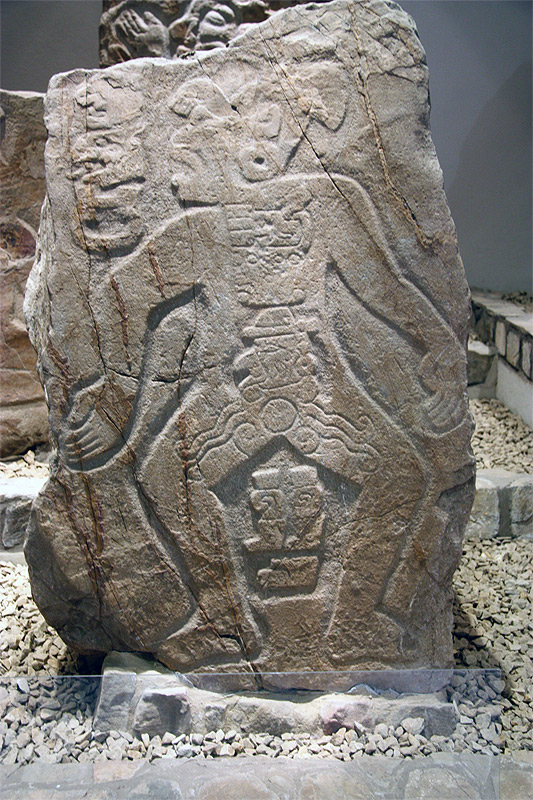
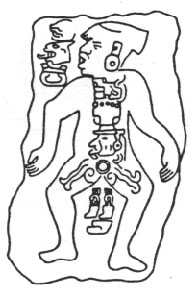 There are also longer texts, such as Danzante
55.
There are also longer texts, such as Danzante
55.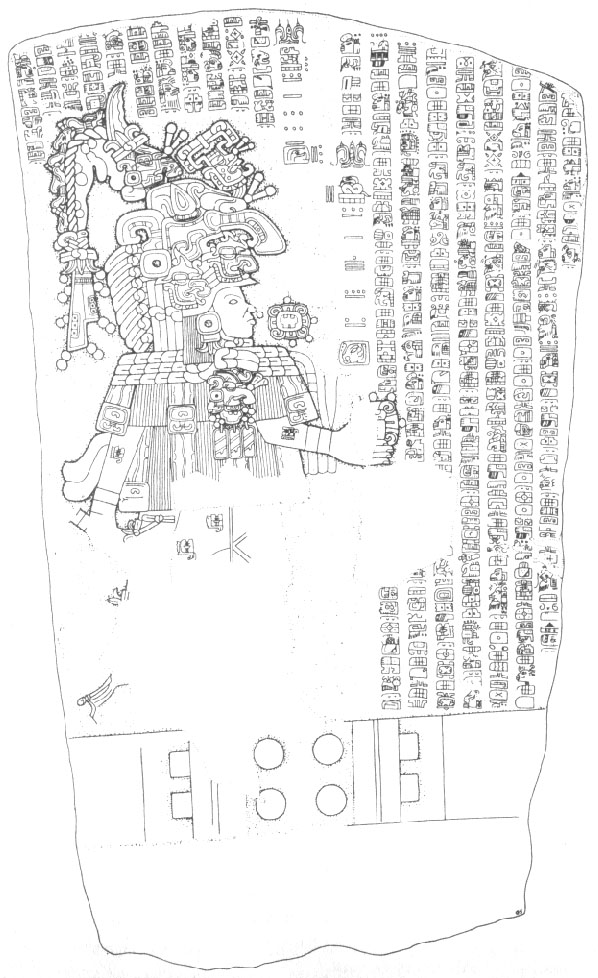 The only other script of Mesoamerica
that appears to have been as linguistically sophisticated as the
Maya script — and at a slightly earlier date — is from
southern Veracruz.
The only other script of Mesoamerica
that appears to have been as linguistically sophisticated as the
Maya script — and at a slightly earlier date — is from
southern Veracruz. 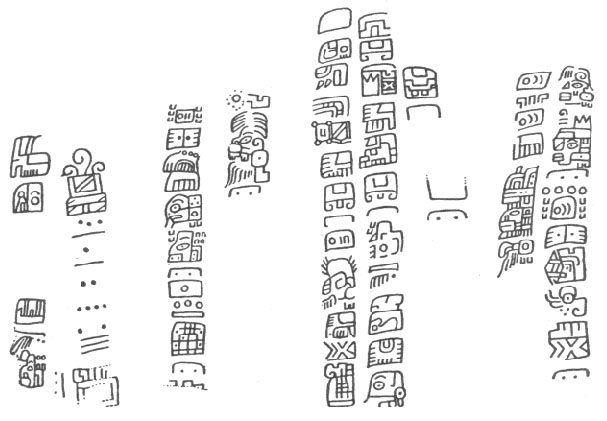
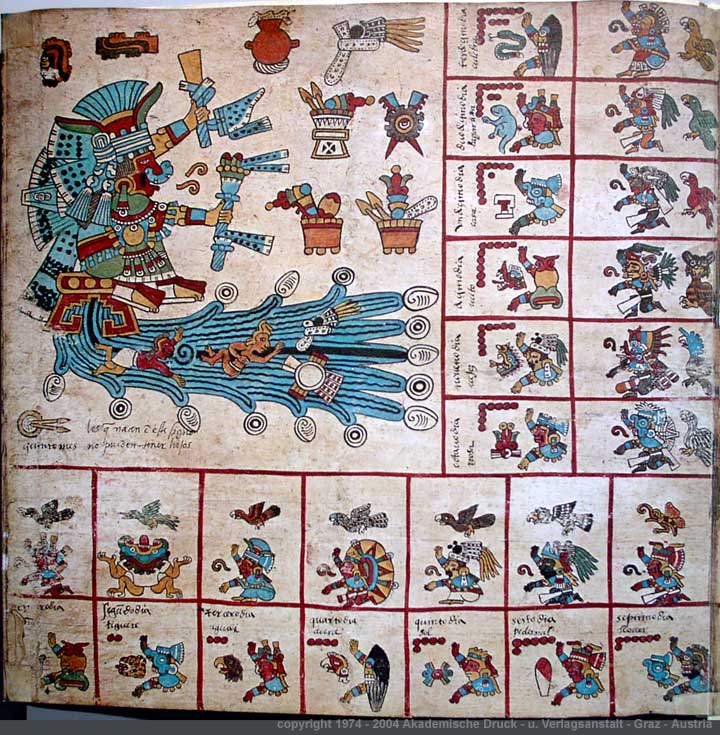
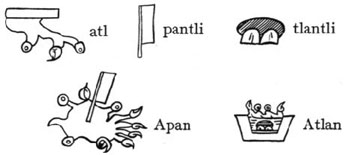



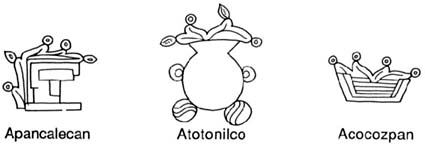

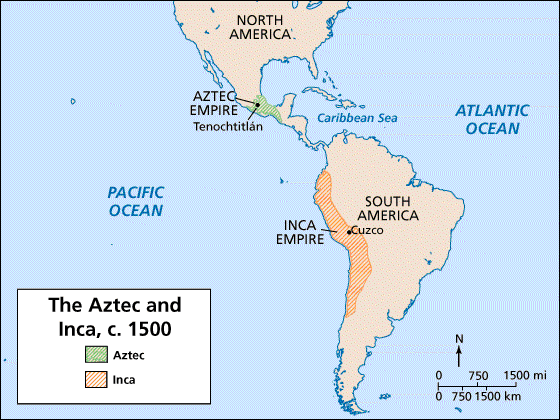
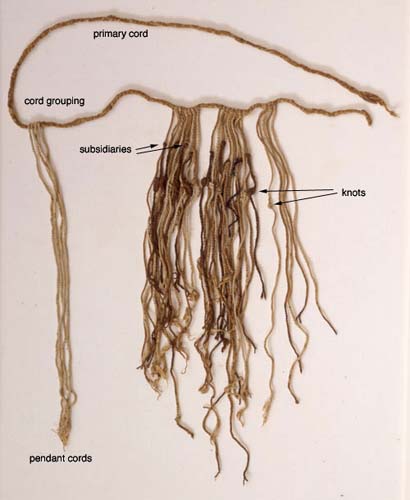



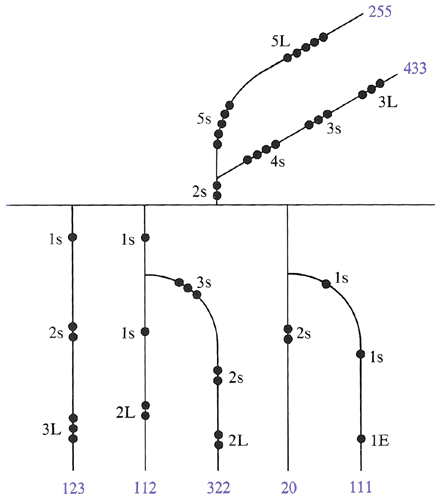
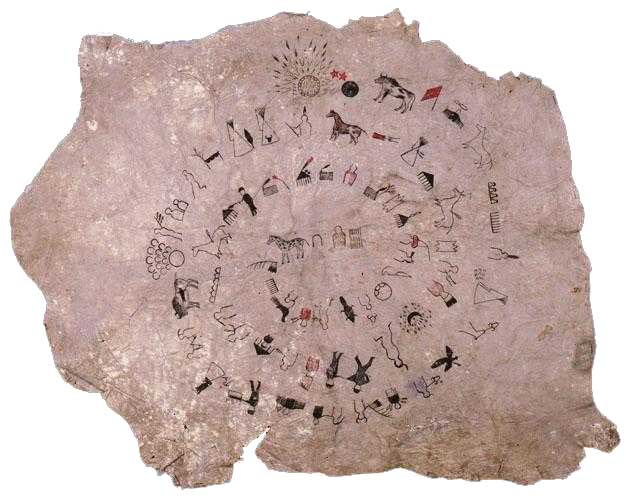





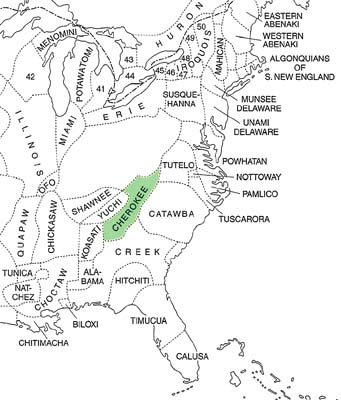
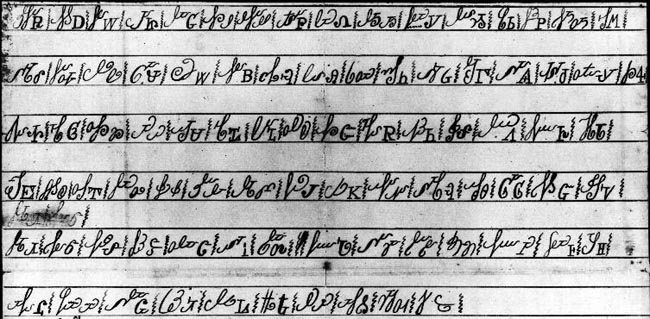
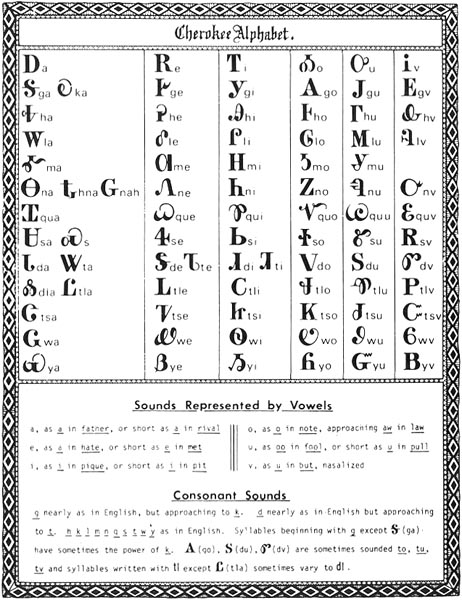 In
1827 a new version was adopted, one that is based graphically on Latin
(and Greek) letters, many with various modifications. This is the form
that was officially adopted by the tribe, and survives today.
In
1827 a new version was adopted, one that is based graphically on Latin
(and Greek) letters, many with various modifications. This is the form
that was officially adopted by the tribe, and survives today.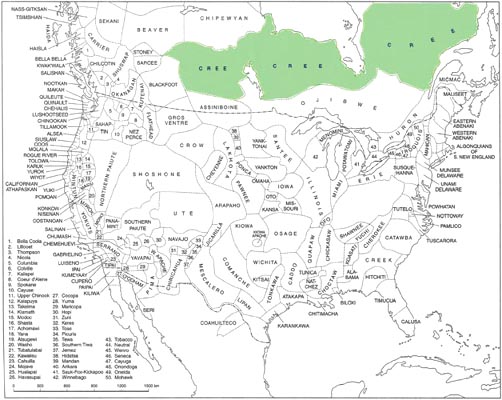


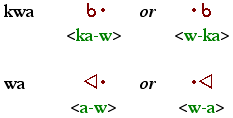
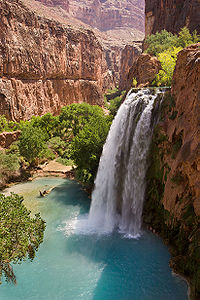
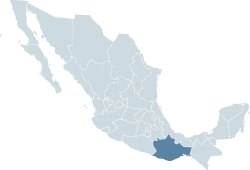
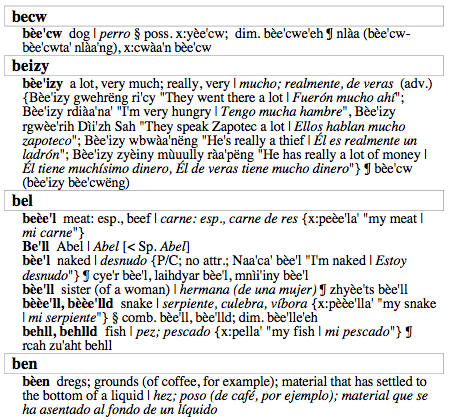 This
difference can also be exploited to make the use of dictionaries easier.
By using the simplified spellings as guide words, even someone who doesn't
understand all the special notations can locate the relevant entry.
This
difference can also be exploited to make the use of dictionaries easier.
By using the simplified spellings as guide words, even someone who doesn't
understand all the special notations can locate the relevant entry.